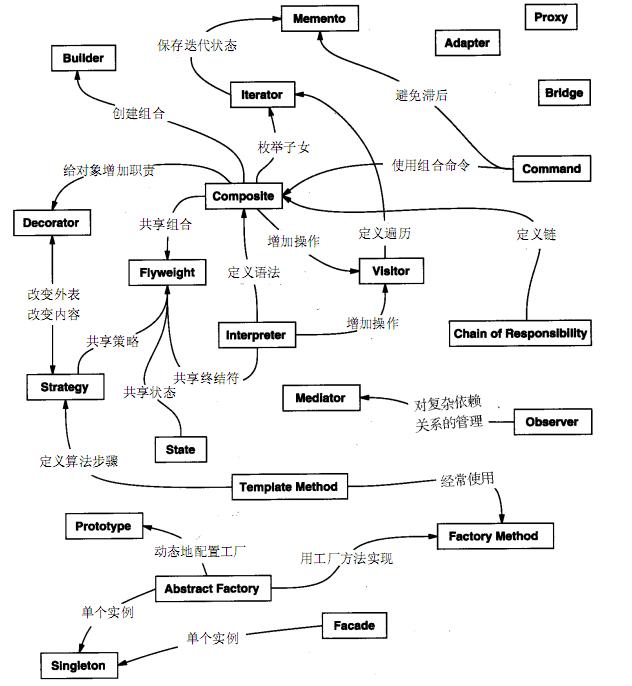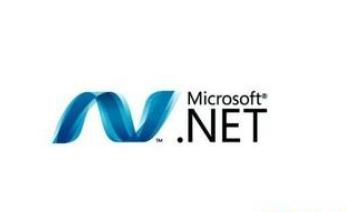10 recommended articles about object processing
What is the iterator pattern? The Iterator design pattern helps construct objects that provide a single standard interface for looping or iterating over any type of countable data. Iterator Pattern Problems and Solutions: The Iterator design pattern helps style objects to handle collections of data or other objects. When creating a class based on the Iterator design pattern, we also create a set of interfaces to provide a unified way to manage these collections. Sometimes, the data set seems very simple. Programmers may not anticipate changes, so they choose not to modify their code and not create iterators. This situation often occurs when calling the database. At this point, the programmer creates a MySQL query and then executes a simple fetch array command. However, keeping such a procedural approach in the code is not the best solution. Iterator objects should be created when processing MySQL result sets. A simpler approach is to provide a MySQL query to the class constructor and then loop through the result set by calling the public methods of the iterator object. More complex iterator examples may also have additional parameters to be sent to the iterator, and depending on these conditions, it is possible to execute different sets of MySQL queries. But in any case, external
1. PHP Advanced Object-Oriented Design Pattern: Iterator Pattern Usage Example

Introduction: What is the iterator pattern? The Iterator design pattern helps construct objects that provide a single standard interface for looping or iterating over any type of countable data. Iterator Pattern Problems and Solutions: The Iterator design pattern helps style objects handle collections of data or other objects. When creating a class based on the Iterator design pattern, we also create a set of interfaces to provide a unified way to manage these collections. Sometimes, the data set seems very simple. Programmers may not anticipate changes, so they choose not to modify their code and not create iterators. This situation often occurs when calling the database. At this point, the programmer creates a MySQL query and then executes a simple fetch array command. But
2. Detailed explanation of strings in Java

Introduction: In java, strings are processed as objects of type String. The String class is located in the java.lang package, which is automatically imported by all programs by default.
3. .Net Garbage Collection Mechanism Principle (2)

Introduction: The previous article introduced the basic principles of .Net garbage collection and the internal mechanism of garbage collection to execute the Finalize method; in this article we look at weak reference objects, generations, multi-threaded garbage collection, and large objects Processing and performance counters related to garbage collection.
4. .Net Garbage Collection and Large Object Processing

Introduction: The CLR garbage collector divides objects according to the size of the space they occupy. There is a big difference in how large objects and small objects are handled. For example, memory defragmentation - moving large objects in memory is expensive. Let's study how the garbage collector handles large objects and what potential impact large objects have on program performance.
5. C# Programming Basics Serialization

##Introduction: Serialization is the processing of objects into a byte stream to store the object or transfer to memory, database, or file. Its main purpose is to save the state of an object so that it can be recreated when needed. The opposite process is called deserialization.
6. C++ Design Patterns A Brief Understanding of Responsibility Chain Pattern

Introduction: Chain of Responsibility pattern (ChainOfResponsibility): allows multiple objects to have the opportunity to process requests, thereby avoiding the conflict between the sender and receiver of the request. coupling relationship between them. Chain this object and pass the request along the chain until an object handles it.
7. A brief discussion on the processing of string objects encountered in javascript

Introduction: A brief discussion on the processing of string objects encountered in javascript
8. responsibility php design pattern Chain Of Responsibility chain of responsibility pattern
Introduction: responsibility:responsibility php design pattern Chain Of Responsibility Chain of Responsibility pattern: Copy the code The code is as follows:
##9. pimchanok leuwisetpaiboon A brief analysis of PHP watermark technology
Introduction: pimchanok leuwisetpaiboon: pimchanok leuwisetpaiboon A brief analysis of PHP watermark technology: I have never been very familiar with PHP object processing. I used to look for manuals when using it. Today someone asked about watermarking on the phpchina forum. I happened to want to learn about it, so I studied the implementation of image watermarking in PHP. Searching the manual, I found that PHP's GD library is really powerful and easy to implement the watermark function. Watermarking is actually merging two images. The same can be achieved for watermark text. I provide simple learning examples, very simple, mainly to understand the principles. Two pictures: 1. photo.
10. h5 New features of PHP5: More object-oriented PHP
Introduction: h5:h5 New features of PHP5: More object-oriented PHP: The core of PHP's object processing part has been completely redeveloped, providing more functions and improving performance. In previous versions of PHP, objects were handled the same way as basic types (numbers, strings). The disadvantage of this method is that when assigning the object to a variable or passing the object through parameters, the object will be completely copied. In the new version, the above operation will pass a reference (reference can be understood as an identifier of the object) instead of a value. Many PHP programmers may not even be aware of the old way of handling objects. In fact, most PHP applications can be very
The above is the detailed content of 10 recommended articles about object processing. For more information, please follow other related articles on the PHP Chinese website!

Hot AI Tools

Undresser.AI Undress
AI-powered app for creating realistic nude photos

AI Clothes Remover
Online AI tool for removing clothes from photos.

Undress AI Tool
Undress images for free

Clothoff.io
AI clothes remover

Video Face Swap
Swap faces in any video effortlessly with our completely free AI face swap tool!

Hot Article

Hot Tools

Notepad++7.3.1
Easy-to-use and free code editor

SublimeText3 Chinese version
Chinese version, very easy to use

Zend Studio 13.0.1
Powerful PHP integrated development environment

Dreamweaver CS6
Visual web development tools

SublimeText3 Mac version
God-level code editing software (SublimeText3)

Hot Topics
 1666
1666
 14
14
 1425
1425
 52
52
 1325
1325
 25
25
 1272
1272
 29
29
 1252
1252
 24
24
 Explain secure password hashing in PHP (e.g., password_hash, password_verify). Why not use MD5 or SHA1?
Apr 17, 2025 am 12:06 AM
Explain secure password hashing in PHP (e.g., password_hash, password_verify). Why not use MD5 or SHA1?
Apr 17, 2025 am 12:06 AM
In PHP, password_hash and password_verify functions should be used to implement secure password hashing, and MD5 or SHA1 should not be used. 1) password_hash generates a hash containing salt values to enhance security. 2) Password_verify verify password and ensure security by comparing hash values. 3) MD5 and SHA1 are vulnerable and lack salt values, and are not suitable for modern password security.
 PHP and Python: Comparing Two Popular Programming Languages
Apr 14, 2025 am 12:13 AM
PHP and Python: Comparing Two Popular Programming Languages
Apr 14, 2025 am 12:13 AM
PHP and Python each have their own advantages, and choose according to project requirements. 1.PHP is suitable for web development, especially for rapid development and maintenance of websites. 2. Python is suitable for data science, machine learning and artificial intelligence, with concise syntax and suitable for beginners.
 PHP in Action: Real-World Examples and Applications
Apr 14, 2025 am 12:19 AM
PHP in Action: Real-World Examples and Applications
Apr 14, 2025 am 12:19 AM
PHP is widely used in e-commerce, content management systems and API development. 1) E-commerce: used for shopping cart function and payment processing. 2) Content management system: used for dynamic content generation and user management. 3) API development: used for RESTful API development and API security. Through performance optimization and best practices, the efficiency and maintainability of PHP applications are improved.
 PHP: A Key Language for Web Development
Apr 13, 2025 am 12:08 AM
PHP: A Key Language for Web Development
Apr 13, 2025 am 12:08 AM
PHP is a scripting language widely used on the server side, especially suitable for web development. 1.PHP can embed HTML, process HTTP requests and responses, and supports a variety of databases. 2.PHP is used to generate dynamic web content, process form data, access databases, etc., with strong community support and open source resources. 3. PHP is an interpreted language, and the execution process includes lexical analysis, grammatical analysis, compilation and execution. 4.PHP can be combined with MySQL for advanced applications such as user registration systems. 5. When debugging PHP, you can use functions such as error_reporting() and var_dump(). 6. Optimize PHP code to use caching mechanisms, optimize database queries and use built-in functions. 7
 How does PHP type hinting work, including scalar types, return types, union types, and nullable types?
Apr 17, 2025 am 12:25 AM
How does PHP type hinting work, including scalar types, return types, union types, and nullable types?
Apr 17, 2025 am 12:25 AM
PHP type prompts to improve code quality and readability. 1) Scalar type tips: Since PHP7.0, basic data types are allowed to be specified in function parameters, such as int, float, etc. 2) Return type prompt: Ensure the consistency of the function return value type. 3) Union type prompt: Since PHP8.0, multiple types are allowed to be specified in function parameters or return values. 4) Nullable type prompt: Allows to include null values and handle functions that may return null values.
 The Enduring Relevance of PHP: Is It Still Alive?
Apr 14, 2025 am 12:12 AM
The Enduring Relevance of PHP: Is It Still Alive?
Apr 14, 2025 am 12:12 AM
PHP is still dynamic and still occupies an important position in the field of modern programming. 1) PHP's simplicity and powerful community support make it widely used in web development; 2) Its flexibility and stability make it outstanding in handling web forms, database operations and file processing; 3) PHP is constantly evolving and optimizing, suitable for beginners and experienced developers.
 PHP vs. Other Languages: A Comparison
Apr 13, 2025 am 12:19 AM
PHP vs. Other Languages: A Comparison
Apr 13, 2025 am 12:19 AM
PHP is suitable for web development, especially in rapid development and processing dynamic content, but is not good at data science and enterprise-level applications. Compared with Python, PHP has more advantages in web development, but is not as good as Python in the field of data science; compared with Java, PHP performs worse in enterprise-level applications, but is more flexible in web development; compared with JavaScript, PHP is more concise in back-end development, but is not as good as JavaScript in front-end development.
 PHP and Python: Code Examples and Comparison
Apr 15, 2025 am 12:07 AM
PHP and Python: Code Examples and Comparison
Apr 15, 2025 am 12:07 AM
PHP and Python have their own advantages and disadvantages, and the choice depends on project needs and personal preferences. 1.PHP is suitable for rapid development and maintenance of large-scale web applications. 2. Python dominates the field of data science and machine learning.




